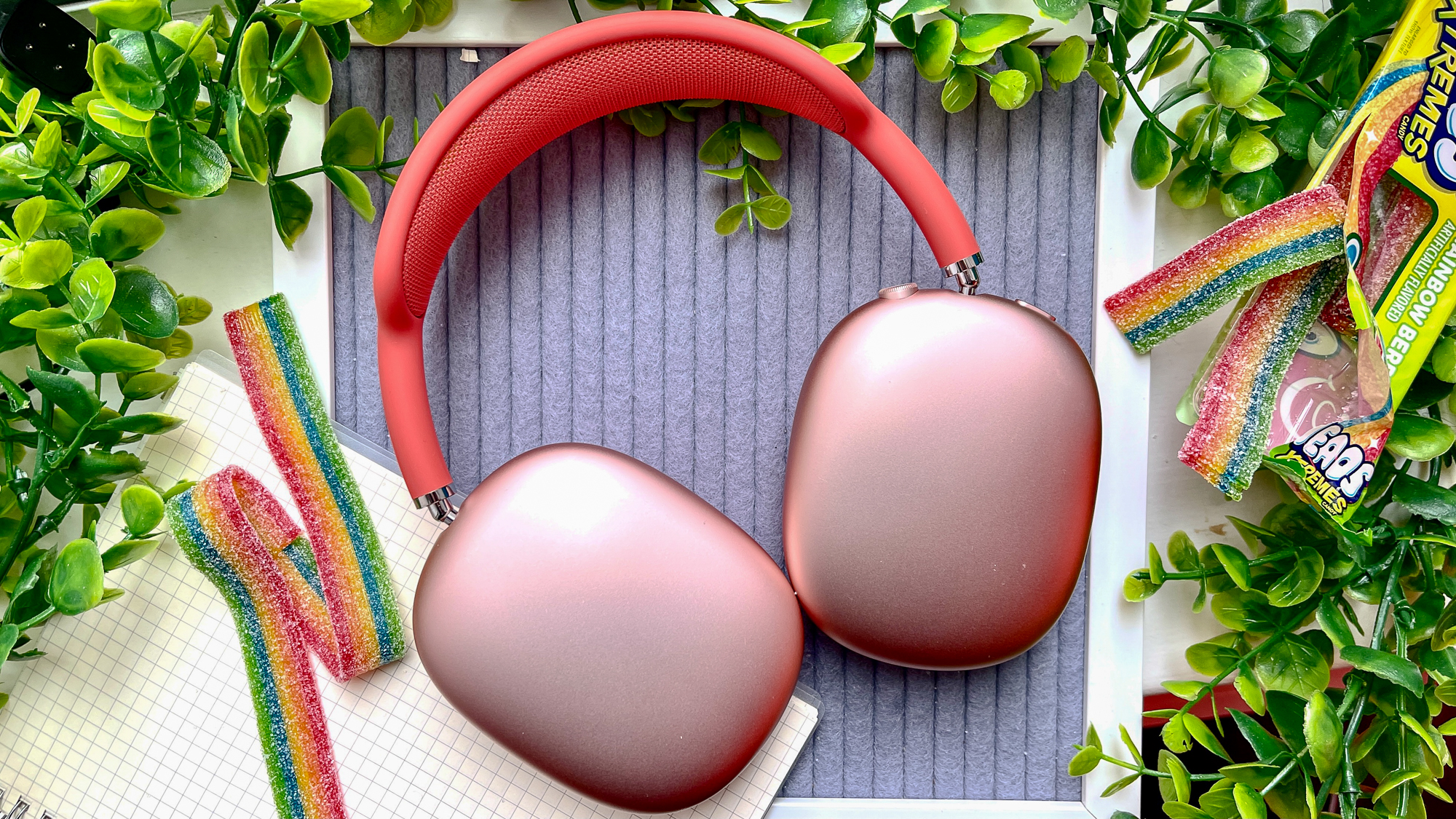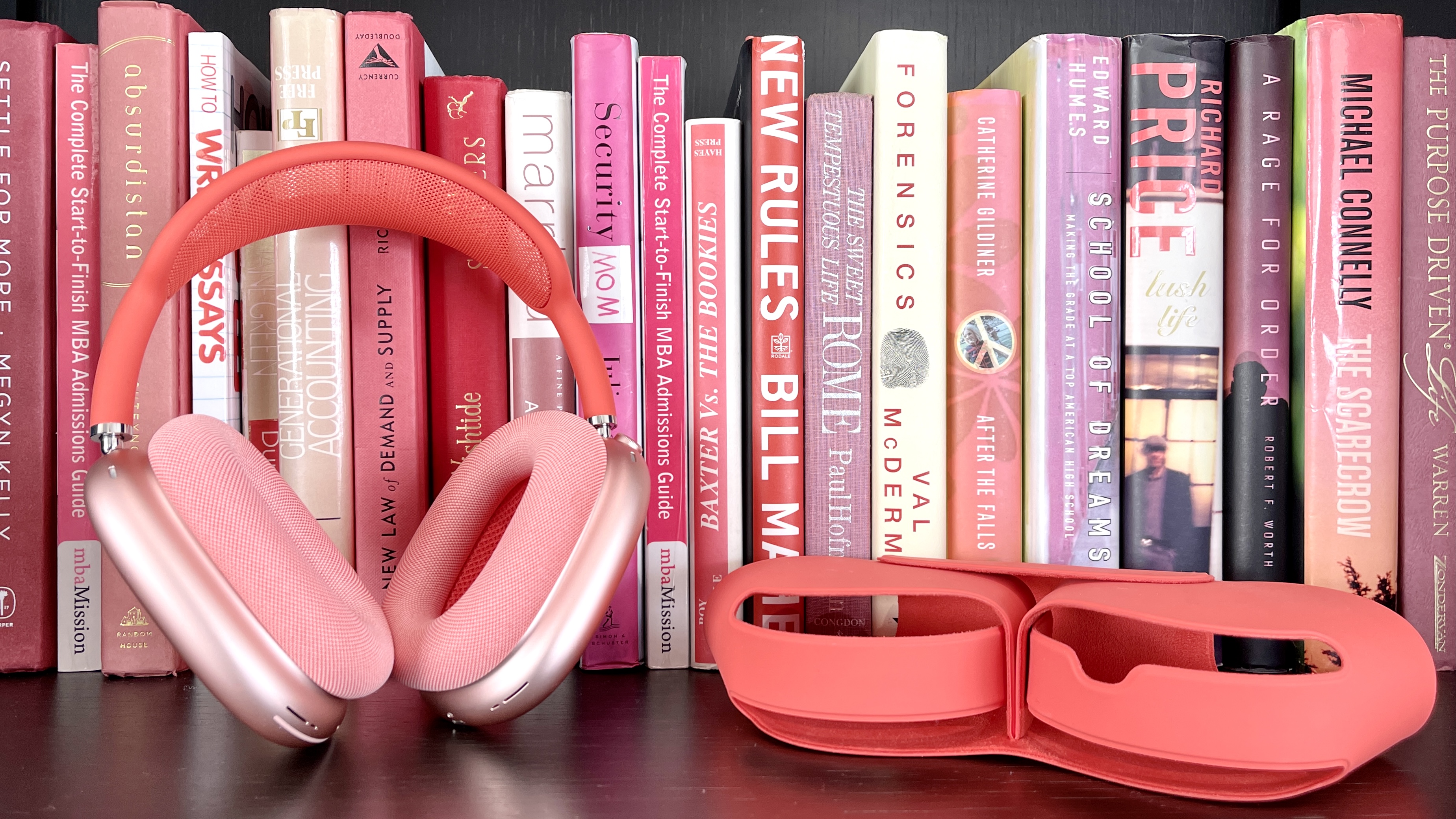The AirPods changed headphones forever — will AirPods Max do the same?
How the AirPods shaped wireless earbuds, and whether the AirPods Max can do the same for over-ear headphones

The Apple AirPods Max launch can only be called a success. Despite some consternation over their high $549 price, most reactions (including our own AirPods Max review) have been broadly positive, and the noise-cancelling headphones have sold so well they’re on back order until this March.
And yet, while these are very different headphones to the original in-ear AirPods, it’s only when you consider how those little buds impacted the world of headphones that you realize the vastness of the footsteps that the AirPods Max now follow in.
- Tips and tricks for how to use AirPods and AirPods Max
- Apple AirPods Max vs AirPods Pro: What should you buy?
True wireless headphones did exist before the AirPods’ 2016 release, but none were nearly as popular: 15 million pairs sold in 2017, according to some analysts, followed by 35 million pairs in 2018. If pioneers of the no-wires design like Onkyo and Bragi proved that the idea would work, then it was Apple that proved the idea would sell.
Now, every major headphones manufacturer from Bose to Sennheiser wants a piece, and as our best wireless earbuds list shows, there’s no shortage of quality, completely cable-free earpieces.
Still, it all started, in a realistic sense, with the AirPods. By all accounts the AirPods Max are already selling like they’re $200 cheaper, but can they truly replicate what the AirPods have achieved — shaping an entire industry in their image?
Warmer reception, quieter launch

One thing the AirPods Max have in their favor is, outside the deserved bemusement at the price and their unsightly, unprotective Smart Case, they’ve been welcomed much more openly than the AirPods were at first. The way the AirPods' long, gleaming white stalks protruded from users’ ears was a particular source of ridicule; in our review of the improved 2nd-gen AirPods, Sherri L. Smith noted that the originals were “reminiscent of the hair gel joke” from Something About Mary.
Still, Apple was cunning — cynical, even — in its efforts to ensure the AirPods were a hit. Central to this plan was linking the AirPods to the phenomenally popular iPhone, specifically the iPhone 7 and iPhone 7 Plus models at the time.
Conveniently (for Apple) these were the first iPhones to drop the 3.5mm headphone jack, and within minutes of this omission being announced, so too was a workaround: the fully wireless AirPods, complete with iPhone-matching styling and Siri integration. Never mind that they were the solution to a problem entirely of Apple’s own making, the iPhone 7 had its first must-have accessory. And thus, since the phone’s success was assured, so too were the headphones’.
Get instant access to breaking news, the hottest reviews, great deals and helpful tips.
The AirPods Max, however, haven’t had such favorable launch conditions. Apple is supporting them with the expected advertising, sure, but it’s not pitching these headphones as the perfect companion to a hot new iPhone, or even taking a similar piggyback approach with a recent MacBook or iPad. The AirPods Max stand on their own, which might be a sign of confidence on Apple’s part but is unlikely engineer the same kind of long-term sales success that the iPhone 7 launch event did for the AirPods — even if people are cracking fewer jokes at them.

That said, the AirPods themselves were not world dominators on paper. Apple certainly has a knack for these unlikely victories; if anything the AirPods were a reflection of the original iPad. This was not the first tablet computer any more than the AirPods were the first true wireless earbuds, and it too was roundly mocked at launch, to the extent that Steve Jobs was reportedly left “annoyed and depressed” by the reaction to Apple's tablet.
Nearly 11 years and more than 500 million iPad sales later, Apple is undisputedly the king of tablets, most of its Android-favoring competitors having dropped to producing the occasional slate or given up entirely. The AirPods, it must be said, don’t enjoy quite the same degree of dominance, largely because the headphones industry remains eager to bring new, competing earbuds to market. But the fact that there are so many rival earbuds to begin with can surely be credited, at least in part, to the AirPods’ successful example.
Tough crowds and new tricks

Again, though, the AirPods Max situation is different. Among over-ear, active noise-cancelling headphones, Apple is not starting from a position of power — they’re the young upstart, issuing challenges to established and widely-liked cans such as the Bose 700 and Sony WH-1000XM4. What’s more, unlike with earbuds — which arguably possess a wider appeal that’s more inclusive of casual music listeners and those on tight budgets — any set of over-ear headphones will need to demonstrate their superiority to a more discerning, audiophilic audience.
In other words, it’s a tougher sell, though the AirPods Max can pull out a handful of tricks to make themselves stand out. Spatial Audio, which originated on the in-ear AirPods Pro, is one: a clever application of connected sensors that creates a 3D surround sound effect as you move your head. Adaptive EQ is another — this trades off the appeal of being to customize equalizer settings to your liking for the crowd-pleasing convenience of having the headphones do it for you, dynamically and according to how the earcups fit your specifically.
As a whole, the AirPods Max are simply not revolutionary enough to inspire sweeping changes in what we can expect from future over-ear headphones. But individual features like these? It’s much easier to see how Bose, Sony, Sennheiser and others could start competing on specialized capabilities, especially if investing on the essentials — like sound quality and comfort — starts to produce diminishing returns.
Leading and following

Then there’s the subject of, let’s be frank, copying. Apple’s talent for innovation also makes it a source of inspiration for rival manufacturers, even if the latter wouldn’t admit it, and while it would be unfair to suggest true wireless earbuds are solely popular because of the AirPods, the cribbing of design traits and specific features does happen.
Very recently, leaked specs for the Samsung Galaxy Buds Pro revealed a Spatial Audio feature essentially identical to that of the AirPods Pro, so it’s very feasible that over-ear headphone manufacturers could borrow systems like this and Adaptive EQ from the AirPods Max.
Competitors have also been willing to follow suit on Apple’s less consumer-friendly moves, especially where the iPhone is concerned: first making headphone jacks an endangered species on flagship phones, and more recently taking turns to give up including chargers in the box as well.
The AirPods Max do plenty of their own, not entirely welcome streamlining: there’s no 3.5mm input, no power button and if you want to listen over a cabled connection, that’s an extra $35 for a Lightning-to-USB-C cable. When the AirPods Max are happily making these omissions and still selling out, it’s not unrealistic that other headphone makers could try similar cost-cutting — and could we even blame them?

In a similar vein, it’s already apparent that the high price of the AirPods Max is doing little to dull its appeal, and this could be taken as a sign that rival manufacturers might not need to price their own headphones as aggressively as they thought.
Not that the best noise cancelling headphones are cheap to begin with. The Bose 700 will set you back $339; Sony’s WH-1000XM4 are more affordable at $278, yet still costlier than even the most premium wireless earbuds. But if the AirPods Max spark a race to the top on features, you can expect that to correlate with rising prices. Head-tracking tech doesn’t come cheap, after all.
Possibly an ideal scenario would be that we could still have headphones like the WH-1000XM4, which nail the essentials of sound quality, ANC and comfort at a middling price, while a new tier blossoms at the top: expensive but truly luxurious headphones dripping with extra features and top-grade connectivity.
Leaving a mark and lowering sights

This, though, would likely be the closest the AirPods Max come to fundamentally changing over-ear headphones as we know them. Apple’s cans could claim their own, extravagant corner, but to do what the AirPods did and inspire an entire industry of copycats? The conditions, unique as they were, just aren’t there.
There’s no guaranteed mega-selling iPhone to ride the coattails of, and the world isn’t missing a mass-appeal set of chunky ANC headphones like it was for true wireless earbuds.
That doesn’t mean the AirPods Max are a bad product, nor that their success so far is misleading, just that they won’t cause the same seismic shift as their tiny, white-stalked ancestors. And that can be fine — not every new piece of tech needs to change the world. Sometimes they can just be a pair of rather good headphones.
- The best AirPods Max alternatives you can buy
- Everything you need to know about the Apple AirPods 3

James is currently Hardware Editor at Rock Paper Shotgun, but before that was Audio Editor at Tom’s Guide, where he covered headphones, speakers, soundbars and anything else that intentionally makes noise. A PC enthusiast, he also wrote computing and gaming news for TG, usually relating to how hard it is to find graphics card stock.
